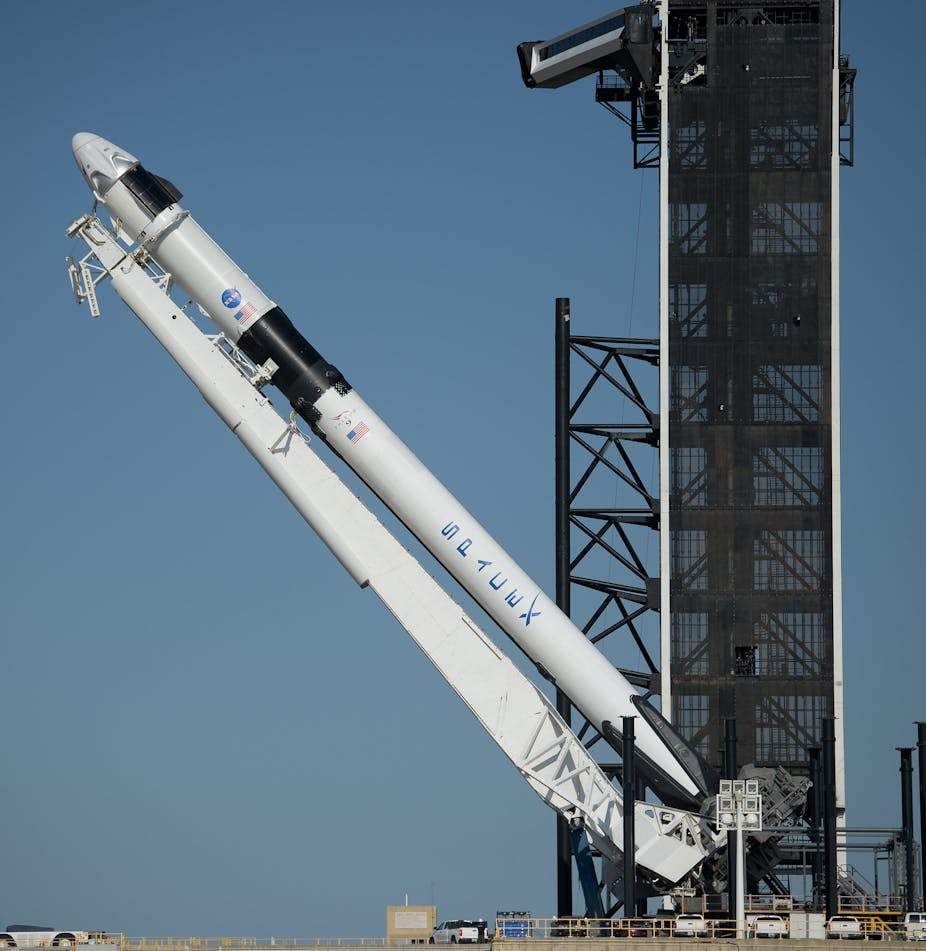SpaceX: Revolutionizing the Future of Space Travel

SpaceX is a name that has become synonymous with innovation, exploration, and pushing the boundaries of what humanity can achieve. Founded by Elon Musk in 2002, this private aerospace company has not only challenged traditional space programs but also sparked a new era of commercial space exploration. With groundbreaking achievements and bold ambitions, SpaceX has made a lasting impact on how we view space travel. Let’s dive deep into the vision, technology, and milestones that make SpaceX a leader in the space industry.
The Vision Behind SpaceX

At its core, SpaceX was founded with two primary goals: to reduce the cost of space travel and to make life multi-planetary. Elon Musk believes that humans need to become an interplanetary species to ensure the survival of humanity. Colonizing Mars is a central part of this vision. However, sending people to another planet is no easy task. SpaceX aims to achieve this dream by focusing on reusable rockets, lowering launch costs, and innovating new spacecraft technologies.
A New Approach: SpaceX and Reusable Rockets
One of the most significant breakthroughs by SpaceX is the development of reusable rockets. Traditionally, space missions were prohibitively expensive, with rockets discarded after a single launch. SpaceX flipped that model on its head by designing rockets like the Falcon 9, which can land safely back on Earth and be reused multiple times. This innovation has drastically reduced the cost of space travel, paving the way for more frequent missions.
Benefits of Reusable Rockets
- Cost Savings: Reusing rockets significantly lower launch costs.
- Faster Turnaround: Spacecraft can be launched more frequently without needing to build new rockets.
- Environmental Impact: Reusability reduces the amount of space debris and wasted resources.
With rockets like the Falcon 9 successfully landing and flying again, SpaceX has proven that reusable technology is not just a concept—it’s the future.
Starship: A Gateway to Mars and Beyond
SpaceX’s Starship is another revolutionary project. This massive spacecraft is designed to carry both cargo and humans to distant destinations, including Mars. Starship aims to be the most powerful rocket ever built, capable of carrying up to 100 passengers per flight. With a sleek design and stainless steel body, it promises to offer a comfortable and safe ride through space.
What Makes Starship Unique?
- Fully Reusable: Both the upper and lower stages can be reused, reducing operational costs.
- Multipurpose Design: Starship can be used for Moon landings, satellite launches, and interplanetary missions.
- Capacity for Interplanetary Travel: It’s built to handle long-duration space missions, critical for reaching Mars.
SpaceX plans to make Starship the backbone of future space travel, opening new frontiers and inspiring generations of explorers.
Collaborations with NASA and International Agencies
Although SpaceX is a private company, it actively collaborates with government space agencies like NASA. In 2020, SpaceX made history by launching the first commercially built spacecraft—Crew Dragon—to transport astronauts to the International Space Station (ISS). This marked the first time that a private company achieved such a feat, demonstrating SpaceX’s capabilities and reliability.
These partnerships show that SpaceX is not just competing with traditional agencies—it’s working alongside them to advance humanity’s exploration of space. Governments now rely on private players like SpaceX to provide efficient and affordable launch services.
The Role of SpaceX in Satellite Launches
Another area where SpaceX excels is in satellite deployment. Its Falcon 9 rocket has become a trusted vehicle for launching satellites into orbit. From telecommunications to weather monitoring, SpaceX has launched hundreds of satellites for various purposes. One of its most ambitious projects is Starlink, a satellite internet network that aims to provide high-speed internet access across the globe.
Starlink’s Impact on the Global Internet
- Remote Connectivity: Starlink promises to connect rural and remote areas where traditional internet services are unavailable.
- Low Latency: The satellites operate in low Earth orbit, providing faster internet with minimal delays.
- Global Access: Starlink could revolutionize communication by offering worldwide coverage, bridging the digital divide.
With thousands of satellites already in orbit, Starlink is well on its way to becoming the largest satellite constellation in history.
Breaking Records and Achieving Firsts
SpaceX is known for achieving many “firsts” in the space industry, making headlines for its record-breaking missions.
- First Reusable Orbital Rocket: Falcon 9 became the first orbital rocket to be reused successfully.
- First Private Company to Send Humans to Space: In 2020, SpaceX launched astronauts to the ISS aboard Crew Dragon.
- Most Satellites Launched on a Single Mission: SpaceX holds the record for deploying the most satellites in one launch.
These milestones are more than just records—they are a testament to SpaceX’s commitment to innovation and progress.
The Challenges Along the Way
Despite its many achievements, SpaceX has faced its fair share of challenges. Rocket explosions, delays in testing, and technical setbacks have tested the company’s resilience. However, SpaceX’s culture of learning from failures has been key to its success. Each failed test or mission provides valuable insights that drive improvement. Musk often emphasizes that failure is an essential part of progress in the space industry.
The Future of Space Travel with SpaceX
The future is looking bright for SpaceX. The company is actively working towards its goal of landing humans on Mars by the 2030s. In addition to Mars colonization, SpaceX plans to participate in NASA’s Artemis program, which aims to return humans to the Moon.
With ongoing developments in Starship and satellite technology, the company’s influence will likely expand even further. Space tourism is also on the horizon, with SpaceX planning missions that will allow private citizens to experience space firsthand.
A Quick Comparison: SpaceX vs Traditional Space Programs
FeatureSpaceXTraditional Programs
Cost of Launch Lower due to reusability Higher with expendable rockets
Innovation Speed Faster, agile development Slower due to bureaucratic processes
Mission Frequency More frequent and flexible Less frequent due to high costs
Use of Private Funding Yes, privately funded Government-funded
Vision for Mars The Active Mars colonization plan Limited to exploration missions
This comparison highlights how SpaceX’s approach offers agility and cost-efficiency, setting it apart from traditional space programs.
Conclusion: SpaceX’s Lasting Impact
SpaceX has redefined what is possible in the realm of space exploration. With a clear focus on reusable technology, interplanetary travel, and satellite networks, the company is driving the future of the aerospace industry. Through bold missions and collaborations, SpaceX is not just reaching for the stars—it’s making them accessible to everyone.
Whether it’s the dream of colonizing Mars or providing global internet with Starlink, SpaceX shows no signs of slowing down. The journey may still have challenges, but the progress so far speaks volumes. SpaceX has proven that with ambition, innovation, and resilience, even the sky is no longer the limit.
In the end, SpaceX is not just a company—it’s a symbol of human potential and the relentless pursuit of the impossible.
SpaceX has already changed the world. Now, it’s set on changing the universe.





